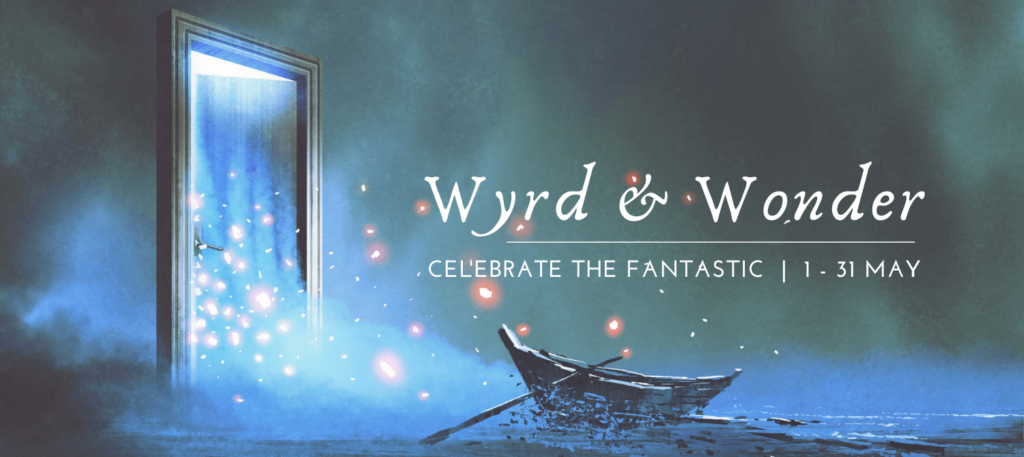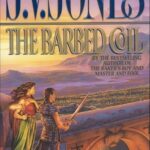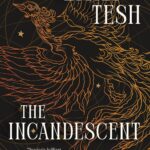
Genres: Fantasy, Queer Protagonists
Representation: Bi/pansexual Native American MC, Native American secondary cast, secondary autistic character, Black sapphic love interest, Native American love interest
PoV: 1st-person, past-tense
Published on: 9th May 2023
ISBN: 0593498291
Goodreads

A young, Indigenous woman enters a colonizer-run dragon academy after bonding with a hatchling-and quickly finds herself at odds with the "approved" way of doing things-in the first book of a brilliant new fantasy series.
The remote island of Masquapaug has not seen a dragon in many generations-until fifteen-year-old Anequs finds a dragon's egg and bonds with its hatchling. Her people are delighted, for all remember the tales of the days when dragons lived among them and danced away the storms of autumn, enabling the people to thrive. To them, Anequs is revered: a Person Who Belongs to a Dragon.
Unfortunately for Anequs, the Anglish conquerors of her land have a quite different opinion. They have a very specific idea on how a dragon should be raised-and who should be doing the raising-and Anequs does not meet any of their requirements. Only with great reluctance do they allow Anequs to enroll in a proper Anglish dragon school on the mainland. If she cannot succeed there, then her dragon will be destroyed.
For a girl with no formal schooling, a non-Anglish upbringing, and a very different understanding of the history of her land challenges abound-both socially and academically. But Anequs is smart and determined, and resolved to learn what she needs to help her dragon, even if it means teaching herself. The one thing she refuses to do, however, is become the meek Anglish miss that everyone expects.
For the world needs changing-and Anequs and her dragon are less coming of age in this bold new world than coming to power.
I received this book for free from the publisher via NetGalley in exchange for an honest review. This does not affect my opinion of the book or the content of my review.
Highlights
~a dragon cannot be owned
~never forget where your home is
~draw the line and hold it
~two love interests ≠ love triangle
~weaponise the tea parties
~remember your dances
~take what’s useful from your colonisers and set the rest on fire
OH, TO SHAPE A DRAGON’S BREATH, HOW DO I LOVE THEE? LET ME COUNT THE INNUMERABLE WAYS!
This is a queer Native American dragon-rider story. If that’s not enough to make you preorder it immediately, I am happy to enumerate for you exactly how excellent it is, but the tl;dr version is that yes, To Shape a Dragon’s Breath is every bit as epic as that sounds.
QUEER
NATIVE AMERICAN
DRAGON-RIDERS.
Or dragon-rider, technically. Even more technically, not a dragon-rider but a Nampeshiweisit, which means chosen by a dragon, because Anequs’ people do not consider dragons as animals to be owned and it’s you who belongs to the dragon, not the other way around–
…I’m getting slightly ahead of myself, aren’t I?
Okay. SO.
Blackgoose introduces us to a world where the Anglish, aka the Vikings (who, now I think about it, made it to North America before Columbus in our world too!) have taken the role the British Empire did in our own history, ie colonising everyone they could, considering themselves the pinnacle of civilisation, and slaughtering everyone who disagrees with them. Or looks different from them. Or lives differently from them. Or–you get the idea.
Anequs is a young Indigenous woman in an analogue of our North America, who can mostly ignore the existence of the Anglish, as they rarely come to her island. And she lives a perfectly normal life, until one of her people’s dragons – thought to be extinct, at least in the area – guides her to an egg. When the dragon who hatches from it – Kasaqua – chooses Anequs, Anglish law says she must attend a dragoneer academy to learn the ‘right way’ to be a dragon-rider. If she fails, Kasaqua will be executed – and the Anglish really want her to fail.
I don’t think Anequs is intended to be read as autistic – especially since one of the secondary characters very much is clearly autistic, even if Anglish society doesn’t have a word for it – but my gods: as an autistic reader, Anequs was a JOY and a RELIEF to read! She just makes sense in a way neurotypical characters often don’t, just as the culture she comes from makes sense in deep, sweeping ways. Her rational, compassionate matter-of-factness highlights the glaring nonsense that is ‘civilised society’; she’s quick to point out, and call out, how meaningless, bizarre, and often damaging the Anglish way of doing things is – and she doesn’t let any of these new and ridiculous rules compromise who she is, or what her goals are. (Or stop her from having two love interests, and no, this is not a love triangle!) Her dedication to her people and her heritage is one of my favourite things about her, and I cannot tell you how much I loved that she has absolutely no interest in becoming an Anglish-approved ‘Nackie’, nevermind trying to become Anglish herself.
“I didn’t ask to be a precedent. I never wanted to leave Masquapaug. If we had anyone there who could teach me, I’d still be there. But our dragons died two hundred years ago, and their dragoneers with them, and the knowledge was lost. I’m here to help my people, Frau Kuiper. I’m not here to make them more like yours.”
Which is not to say that she doesn’t do her best to not make (unnecessary) waves, because she’s very much aware of how precarious her position (and Kasaqua’s) is – but she also knows when and where to draw the line and defend it. I will always love a character (or real life person) who isn’t afraid to say this is wrong – or who is afraid but does it anyway.
And unfortunately, Anequs does have cause to draw that line and say that what she’s facing is wrong, a lot more than once. Racism and colonialism are very big themes in this book; both the institutionalised kinds and the direct, personal kinds aimed at Anequs specifically. One instance of the former that hit hard was on the first day of classes, when Anequs comes to the classroom without notebook and pens – because she’s never been taught this way before, and no one thought to prepare her. Worse is the teacher’s reaction; he assumes she either doesn’t care about his class or is an idiot, rather than the obvious conclusion, which is that her people teach and learn in a very different way. (As someone who is very anti the rote-memorisation approach to learning, this was yet another case where I thought Anequs’ people were much smarter about things!) Even the apparent ‘liberals’ are unintentionally thoughtless or insulting at least half the time – in other words, it’s all exactly like real-world racism.
The clear contrast between how the Anglish are obsessed with their history and myths, while so much of Anequs’ heritage has been lost – because of Anglish colonisation – is a perfect snapshot of the horrifically imbalanced power dynamic between the two cultures. Anequs is penalised in her lessons for her unfamiliarity with Anglish history and lore – but she’s only at the academy in the first place because the Anglish wiped out the Nampeshiweisit who could have taught her what she and Kasaqua need to learn. It’s as enraging as it is heart-breaking.
But Blackgoose has absolutely not written a story that is all suffering or misery-porn; I experienced a lot of rage at what Anequs and her people have to deal with, but I never felt despair. Blackgoose writes bigots as potentially very dangerous but also contemptible, and between Anequs’ calm but fierce strength, her brilliant clever mind, and the allies and support network she has and adds to over the course of the book, it’s pretty clear that no one is going to snuff her out.
If anything, she is clearly starting a much-needed wildfire.
I had become like Crow, venturing to dangerous and unknown lands to bring fire back to my people. I wondered, as we sat together in one another’s company, what we were going to burn with it.
Speaking of fire: let’s talk about the DRAGONS!
Blackgoose has also come up with a really unique (as far as I’m aware) approach to dragons: in this world, dragonfire makes an excellent weapon, but that’s not actually its most important function. Guided by the will of their bonded rider, a dragon’s breath can break down materials into their component elements – think the Periodic Table, not earth/air/fire/water – or combine them to create different materials. Uncontrolled, this is massively dangerous; controlled, it’s almost endlessly useful for all kinds of applications, and it gives dragons a place and role in human society that’s not like any other dragon-rider book I can think of. It’s learning this power and bringing it back to her people that is Anequs’ main goal in studying with the Anglish, although it gradually becomes clear that the Anglish skiltakraft – what we might call chemistry – doesn’t go far enough, has the potential to be and accomplish so much more, but is limited by the Anglish’s rigid thinking and their belief that dragons are ‘just animals’.
“Well, I can certainly see why Frau Kuiper solicited my assistance in making you aware of civilized customs, as it’s obvious that you have little experience with polite society. Primitive superstition and folklore aside, dragons are beasts—as much as dogs or horses are. I very dearly love Magnus, and I’m sure that every dragoneer would say the same of their dragon, but I hold no particular illusions about him. He’s an animal of a witskrafty nature. If he weren’t bonded with me, or some other dragoneer of firm resolve, he would be vicious and dangerous. There are still truly wild dragons in the remote mountains of Tyskland and Vaskosland, and they still menace shepherds and even kill and eat mountaineers and explorers from time to time. It’s my understanding that there are wild dragons in the interior of Markesland as well, along the western and northern frontiers, and that they’re as much a menace to settlers as wolves and great cats are.”
“The dragons—and the wolves and great cats—were all here long before people were. My people have always endeavored to be good neighbors to them, and if your people find them menacing, then I can only presume that you haven’t taken the same care,” I said. “My grandmother didn’t think that there was anything worth knowing that I could learn by coming here, and I’m beginning to wonder if she wasn’t right.”
(Passages like the one above are manifold and will make you want to shake the Anglish idiots. Dragons form psychic bonds with humans, and even if they don’t think in words, how stupid do you have to be to think they’re no different from dogs? THEIR BREATH LITERALLY RESHAPES THE WORLD. THEY ARE CLEARLY NOT ‘JUST ANIMALS’!)
The role of Anglish dragoneers in their society, versus that of a Nampeshiweisit in theirs, is radically different. A Nampeshiweisit works for the good of their people; being a dragoneer, on the other hand, is essentially a status symbol, as if a dragon is the equivalent of an expensive car or Louis Vuitton handbag. We see this in the completely opposing ways Nackies and Anglish take to the hatching of a dragon egg; Anequs’ people keep the egg in a communal space so the dragonet inside ‘meets’ everyone in the village, and chooses their Nampeshiweisit from among all those people – but the Anglish stick the egg in front of just one person, and the dragon can bond to that person or be put down as feral.
Honestly, that kind of tells you all you need to know about how the two cultures view dragons.
Another way in which Blackgoose’s take on dragons – and dragon-riding stories – is something special is that, in this book, Anequs never actually gets to ride Kasaqua. Not because the Anglish won’t allow it or anything, but because Kasaqua is still a baby! I feel like this is something we don’t see very often in dragon-rider stories; in all the examples I can think of, the period between a dragon’s hatching and when they’re big enough to ride is skimmed over, fast-forwarded through. And as much as I am looking forward to Anequs and Kasaqua’s first flight together – and I REALLY AM – I really loved that we got to see this phase of Kasaqua’s development in depth. For one thing, it makes Anequs and Kasaqua’s relationship feel much more organic and real; we see and experience them growing together and into each other, rather than just being told about the bond they have. But it also makes Kasasqua feel more like a real creature; as magical and incredible as dragons are, they start off small and take time to grow bigger, like all living things. It makes Kasaqua easier to believe in.
(And a book full of small!Kasaqua is, as you might expect, completely adorable and enchanting. I’m more than happy to wait for her to get big when it means we got a whole book of her curling up on Anequs’ shoulders, or in her lap, or bounding around like a puppy after butterflies!)
Look: To Shape a Dragon’s Breath is a beautiful, impassioned book, a journey of discovery and dragons, friendship and fear, and being true to yourself, your people, and your dragon. It’s about being an outsider while knowing exactly where your home is; it’s about refusing to be made small, made less, by the people who hate you; about succeeding in spite of how much they want you to fail. It’s about having a strong heart and an open mind, about the importance and value of your heritage, about being able to identify and hold to the things that truly matter. The worldbuilding is deceptively simple and unabashedly impressive; the cast is wonderful, with a whole slew of amazing misfits and social outcasts for Anequs to weave into her pattern; and the main character is an absolute star. The whole approach of this book – to literally everything – filled me with Feels and made me so damn happy.
There’s absolutely nothing I would change. To Shape a Dragon’s Breath is utterly perfect in every respect. This book feels like a game-changer, the start of a new generation of dragon stories, and I could not be more delighted to see it.
“Daughter of my daughter, you’re going to teach us all how to dance with dragons again.”
I can’t remember the last time I was this excited for a book, for what it has the potential to do – to its readers, to the genre, to the publishing industry.
To Shape a Dragon’s Breath is possibly the most unmissable fantasy book of 2023, and definitely the start of the next great dragon-rider series! Preorder it now to come dance with Anequs and Kasaqua next week!







I’m putting this on my tbr list
Awesome! I’m sure you’ll love it :D
I was lucky enough to read an early draft of this, and I can’t tell you how happy it makes me to see this story come to the world. We really needed it. Blackgoose is awesome.
I found it impossible to do the book justice; it’s just too amazing! I still remember being so STUNNED when I first read the blurb, just, completely unable to believe this was a real book really being published! It could make so many waves.
And obviously, I’m currently pining for the next one!
I was happy to see a YA book that really took it’s time to let everything develop. A lot of them get edited down to their barest bones for pacing and this was a really nice treat. You really feel the year you live with Anequs and everything that happens between the characters means so much more.
Yes! I’ve noticed the same – that a lot of YA seems so stripped down – and it’s such a DELIGHT that TSaDB isn’t at all. Getting the sense of the whole year that passes for Anequs is pretty vital for the…feel? atmosphere? thing??? that Blackgoose was going for, I think.